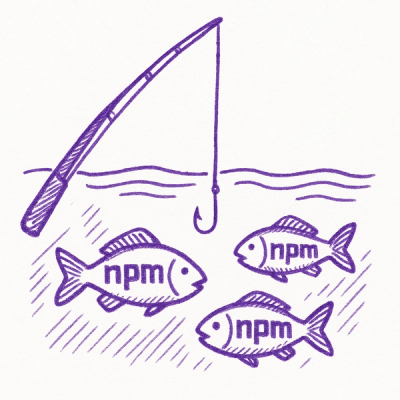map-tools 2.0.0





map-tools is a Google Maps Feature-rich Javascript wrapper that makes things like:
Marker Tagging; asynchronous loading, working with TopoJSON or GeoJSON, custom controls, animation and more. Much simpler with an easy-to-use API.
Benefits
- Less Code: The Google Maps API it is of considerable size. You'll be writing way less code with map-tools.js
- It helps you to keep track of elements created on the Map. Use findMarker() to find Markers by properties.
- More Fun: Add Marker animations, use handlebars style variables.
- Non Intrusive: it extends the API; you can use any other native methods, properties and events anywhere.
- Query elements on the Map to update their options using Crossfilter
- TopoJSON Support: Add Topo/GeoJSON files, set styles and find references easier.
- Well tested. Good GPA rating.
- Framework agnostic.
- My ultimate goals are performance and Google API simplification.
Get Started
it is recommended to use npm to install map-tools but you can also use bower.
NPM:
npm install map-tools --save-dev
Bower:
bower install map-tools --save-dev
Do you need to download it now? Use the direct download link. map-tools.min.js
Need Quick Examples?
Go to: map-tools.io
or pull the repo and run:
npm start
Lazy Loading the Map
You can load the Google Maps JavaScript file asynchronously. This is useful for example: if you are planning on loading the Map on a different view from the Homepage.
Setting a callback function will help you to now when the Map is ready to be used.
If you don't want to lazy load the map, use the option async: false you can still keep the callback function to determine when the Map is ready to be used.
[Live example] (http://map-tools.io/examples/simple.map.html)
var map = new mapTools({
id: 'mymap',
lat: 41.3833,
lng: 2.1833
}, function (err, map) {
if (!err) {
console.log('Map Loaded!', map.instance);
}
});
The first argument id represents the id of the HTML element container where you want to display the Map. If you want to use a class instead use el: '.mymap' to indicate the class name.
lat and lng are the coordenates used to first load the Map.
The callback function contains two arguments:
err it will contain an error object in case something goes wrong during Map initialization.map the mapTools instanciated object. You can use this to trigger further API calls.
id, lat and lng are custom helpers that added to quicky create a Map but you can add many other native Map Options take a look to the Google Maps reference.
Here it is what I think some other useful options:
{
disableDoubleClickZoom: true,
streetViewControl: false
scaleControl: true
}
Map Option Helpers
This Google property is silly: google.maps.MapTypeId.SATELLITE. With map-tools, you can simple use:
{
type: 'SATELLITE'
}
Other types are: ROADMAP, HYBRID and TERRAIN.
HTML
Don't forget to add a simple HTML tag to indicate where to render the Map.
<div id="mymap"></div>
Google Maps Native Instance
Sometimes you just need to go straight to the Google Maps API.
Once the Map is initialized you can either use: map.instance or globally mapTools[YourMapId].instance.
Notice that if you have multiple Maps, you can access all from the global scope.
Map Events
Adding listeners for Map events it is easy. You can add handlers for any of the [Native Map Events] (https://developers.google.com/maps/documentation/javascript/events) using the on syntax.
Live example
var map = new mapTools({
on: {
zoom_changed: function() {
console.log('the zoom level has changed!', map.zoom())
}
}
Custom Map Events
marker_visibility_changed it will get trigger anytime that any Marker changes visibility state.
Live example
var map = new mapTools({
on: {
marker_visibility_changed: function(numOfVisibleMarkers) {
console.log('we have a total of %d visible Markers', numOfVisibleMarkers)
}
}
This event it is very useful if you are planning for example on clustering based on this value.
Map Methods
Update Map
Apply ANY option to the Map by calling the updateMap() method like this example:
Live example
map.updateMap({type: 'TERRAIN'});
Center Map
There are two ways you can use this method:
- Center the current Map using coordinates provided during initialitation.
map.center();
- Pass specific latitude and longitude coordinates to jump into a location.
map.center(41.3833, 2.1833);
Zoom Map
With this method you can either:
- Retrive the current Map Zoom Level
map.zoom();
- Set the Map to specific Zoom level.
map.zoom(12);
Get Current Map Center Position
map.locate()
Markers
Adding Markers is simple. Use the addMarker() method to add one or multiple Markers at the same time. The method will return a reference of the Marker(s) added. It will also save a reference under map.markers.all[uid] The uid is either
an unique value that you can provide under data.uid or a self-generated value created by map-tools.
Live example
map.addMarker([{
lat: 41.3833,
lng: 2.1833,
title: 'Barcelona',
on: {
click: function() {
alert(this.title);
}
},
data: {
population: 1700000
}
},
{
lat: 42.5000,
lng: 1.5167,
title: 'Andorra'
}],
{
icon: 'images/city.png',
callback: function(instance) {
console.log('Marker Added', instance);
}
});
lat and lng provides the coordinates to position the Marker.
Use on to define any Marker Events.
The 2nd argument allows you to add options shared between the Markers you are adding.
You can also add any other Native Marker Options
The callback property allows to set a callback function that contains the instance of the Marker. This is useful if for example: You add many Markers at once, but you need to do some additional logic once the Marker is added.
Update Marker
Allows you to update one or multiple marker options.
Live example
map.updateMarker(<marker reference>, {visible: false})
The 1st argument can be: A Marker (reference) an Array of Markers or the uid specified like this: {uid: '<uid>'}
The 2nd argument allows you to set any options you want to update.
For example: visible to change the Marker visibilty.
Remove Marker
Allows you to delete one or multiple Markers. If you don't pass any parameter it will delete ALL Markers in the Map.
map.removeMarker([<marker reference>, <marker reference>]);
Find Marker
With the power of Crossfilter, findMarker() allows you to find any Marker based on a property or a Marker.data property value.
This example will return all the Markers visible on the Map.
map.findMarker({visible: true})
This example will find the Marker that the lowest data.population value
map.findMarker('population', {order: 'DESC', limit: 1})
You can test this query at this Live example
Tags
Allows you to Tag a specific Marker to later search or update based on that tag value.
You can set a tags property to a Marker
Live example
map.addMarker({
lat: 42.5000,
lng: 1.5167,
title: 'Andorra'
tags: 'cities'
});
You can either set a string or an Array of tags
And then find the Marker's reference that have this tag.
map.findMarker({tags: 'cities'})
You could also update a Marker using their tag.
map.updateMarker({tags: 'countries'}, {visible: false})
At any moment you can add or remove tags from a Marker.
map.updateMarker({tags: 'countries'}, {tags: ['countries', 'EU']})
Reset Marker
This is one of my favorite features. Sometimes you just want to reset some Marker properties to the original value that was set on the initial creation. This method allows you to reset one or multiple Markers to the initial state.
map.resetMarker(<marker instance>, ['icon', 'lat', 'lng']);
The 2nd argument can be either a string or an Array of the properties that you want to reset
Animate Markers
Make your marker bounce move: 'bounce' or drop move: 'drop'
map.addMarker({
lat: 41.3833,
lng: 2.1833,
move: 'bounce'
});
InfoWindow
The infoWindow is the hover bubble to provide more information about the Marker. The open and close properties
allow you to specify what Marker event to use to display or hide the infoWindow.
map.addMarker({
lat: 41.3833,
lng: 2.1833,
infoWindow: {
open: {on: 'mouseover'},
close: {on: 'mouseout', duration: 2000},
content: '<p>{city} City</p>'
},
data: {
city: 'Barcelona'
}
});
the 2nd parameter duration allows you to specify a delay for that event. This is really useful if you want to keep
the infoWindow open for a few seconds before closing after you mouseout.
In this example: the open and close events are different mouseover and mouseout but you could specify exactly the same event click. That will trigger toggle effect on click
The data property is used to store any extra information related to the Marker. You can use curly brakets, for example:
{city} within the content property, to act as a variable that references to the data property.
You can add more native infoWindow options inside infoWindow.
Crossfilter support for Markers
- Add Marker related data into the
data property.
- Add what data properties you want to index into the
filters option. That will generate default Crossfilter dimensions.
function addMarkers() {
map.addMarker([
{
lat: 41.3833, lng: 2.1833,
data: {
name: 'Barcelona',
population: 1621000
}
},{
lat: 41.3833, lng: -3.710436,
data: {
name: 'Madrid',
population: 3234000
}
}
], {
filters: ['population']
});
}
var map = new mapTools({id: 'mymap', lat: 41.3833, lng: -3.710436},
function (err, map) {
if (!err) {
addMarkers();
}
});
Now you can use the power of Crossfilter to update Markers. In this example it finds the city with larger population, Madrid, and makes the marker to bounce.
var marker = map.findMarker('population', {limit: 1});
map.updateMarker(marker, {move: 'bounce'});
You can also pass custom Crossfilter dimensions to the filters option:
filters: [{population: function(d) { }]
GeoJSON support
You can add a GeoJSON file like this:
map.addGeoJson(<parsed JSON>)
TopoJSON support
Once the Map is loaded, you can add a TopoJSON file. Pass an Array of objects containing the object to load into the Map.
map.addTopoJson(<parsed JSON>, [{object: 'states'}, {object: 'counties'}]);
Apply styles to Features
You can set style options to specify the way a Feature should appear when displayed on a map.
{
object: 'states',
style: {
strokeColor: 'red',
strokeWeight: 2,
fillOpacity: 0
}
}
Update styling of existing Features
You can update the style of the existing Feature on a map.
var colorado = map.findFeature({NAME:'Colorado'}, {limit: 1});
var nevada = map.findFeature({NAME:'Colorado'}, {limit: 1});
var style = {fillOpacity: 0.4, fillColor:'black', strokeColor: 'black'};
map.updateFeature([colorado,nevada], {style: style});
You can also update the style of a group of features by a mapping function.
function color() {
var value = (this.data.CENSUSAREA/570640.95);
var alpha = 5;
var h = 210, s = 100,
l = (Math.pow((1 - value), alpha) * 50)+50;
return {
fillColor: 'hsl('+h+','+s+'%,'+l+'%)',
fillOpacity:0.7
}
};
var all = map.findFeature();
map.updateFeature(all, {style: color});
Crossfilter support for Features
You can use a Crossfilter result to update features. In this example it finds the State named: 'Texas' and updates the background color.
var feature = map.findFeature({NAME:'Colorado'}, {limit: 1});
map.updateFeature(feature, {style: {fillColor:'black'}})
Add more Style Options
Add Panel
Adds a custom native Control to Google Maps
map.addPanel({
templateURL: 'templates/custom.panel.html',
position:'top center',
events: {
'.menu li click' : function (e) {
e.target.classList.toggle('active');
}}
});
Add Angular.js template into a Map Panel.
You can inject an Angular template and benefit from two way binding. You'll need to pre-compile the template like this:
var template = '<div>{{scopeVar}}</div>';
map.addPanel({
position: 'top right',
template: $compile(template)($scope)[0]
})
Meteor Users
You can use map-tools as it is but I'm working on a lab project for map-tools.js + Meteor integration. Please go to: meteor-map-tools for more information.
How can you contribute?
Get involved! Check out the list of feature requests. All PRs and ideas are welcome.
##Sponsors
Thank you so much to all our sponsors for providing free licenses:
WebStorm, Code Climate, Travis and [Coveralls] (https://coveralls.io/)



